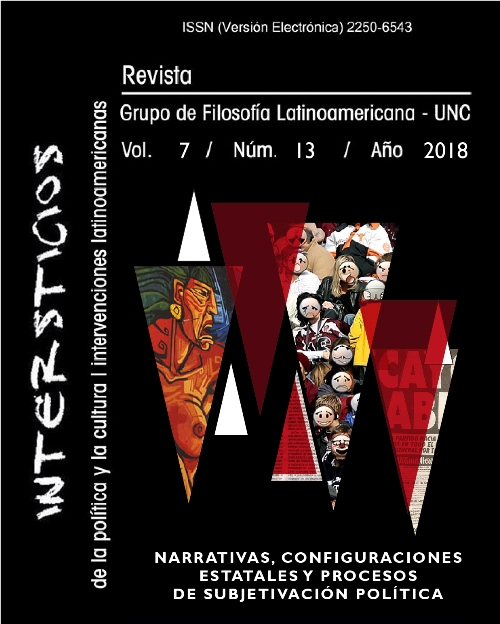Neoliberalism, two readings: economic-political theory or governmental rationality or reason-world
Keywords:
rationality, subjectivation, marketAbstract
Neoliberalism can be interpreted in various ways, such as an economic theory, an economic policy or an ideology and also as a governmental rationality or world reason, an approach that has been gaining strength since the late twentieth century. In the first approach it appears as a radicalization of classical liberalism, which confronts perspectives such as Soviet statism, the National Socialist and the Welfare State, in addition to vindicating the return to the free market. It is defined by ontological-social, methodological and anthropological features. On the other hand, in the second interpretation it is characterized as a rationality that crosses social practices at a microsocial level, as a practice of subjectivation that modifies the behaviors of individuals, conforming subjectivities, so that those belonging to the popular classes they go on to operate << rationally >>, rejecting in passing the values inherent to the interventionist state and those of the popular traditions themselves, reaching a new synthesis by mixing the new neoliberal values with those that were their own. This new form of rationality, this "bottom" neoliberalism that has demonstrated the potential to resist populist policies, has colonized the practices of broad layers of the population, which makes it imperative to reconsider the reflection about this phenomenon, because the consequences of its objectification both at the state-governmental level and at the microphysical level (that of the behavior of the popular estates) jeopardize the very survival of social and economic life, by modifying and destroying the social tissue, articulated by social solidarity
Downloads
Downloads
Published
Issue
Section
License
Authors who have publications with this journal agree to the following terms:
a. Authors will retain their copyright and grant the journal the right of first publication of their work, which will simultaneously be subject to the Creative Commons Attribution License that allows third parties to share the work as long as its author and first publication in this journal are indicated.
b. Authors may adopt other non-exclusive license agreements for distribution of the published version of the work (e.g., deposit it in an institutional telematic archive or publish it in a monographic volume) as long as the initial publication in this journal is indicated.
c. Authors are allowed and encouraged to disseminate their work through the Internet (e.g., in institutional telematic archives or on their web page) after the publication process, which may produce interesting exchanges and increase citations of the published work (see The effect of open access).


